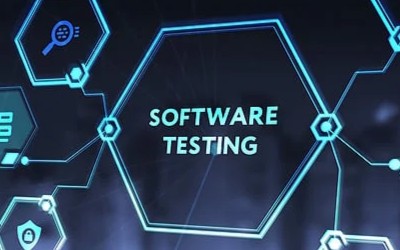Highlights:- Advanced Network Security: Learn in-depth network security strategies, protocols, and techniques. - Penetration Testing: Understand the process of ethical hacking and penetration testing ...
Highlights:
- Advanced Network Security: Learn in-depth network security strategies, protocols, and techniques. - Penetration Testing: Understand the process of ethical hacking and penetration testing to identifyvulnerabilities.
- Threat Intelligence: Gain insights into analyzing cyber threats and using intelligence to improvesecurity posture. - Advanced Cryptography: Study advanced encryption algorithms, digital signatures, and their roleinsecuring communications. - Security Incident Management: Learn how to respond to and manage cyber incidents effectively. - Malware Analysis: Understand how to analyze and mitigate malware attacks. - Security Operations: Explore the role of security operations centers (SOCs) and tools used for
monitoring and response. - Compliance and Risk Management: Understand the regulatory frameworks, standards, and riskmanagement techniques in cybersecurity.
Course Objective:
By the end of this course, you will be able to: - Design and implement advanced network security measures to protect systems and networks. - Conduct penetration testing to assess and identify vulnerabilities in systems and applications. - Analyze and respond to advanced cyber threats using threat intelligence. - Implement advanced cryptographic techniques to secure sensitive data. - Manage and mitigate security incidents through effective response and remediation strategies. - Understand and apply cybersecurity compliance and risk management strategies in organizations. - Gain proficiency in using security tools and technologies for real-time monitoring and defense.
Course Structure:
1. Advanced Network Security
- Introduction to Advanced Network Security: Key concepts and techniques for securing complexnetworks. - Network Protocols and Vulnerabilities: Understanding and mitigating risks in protocols like TCP/IP, DNS, HTTP, etc.
- VPNs and Remote Access Security: Securing communication between remote users and networks. - Network Intrusion Detection and Prevention Systems (IDS/IPS): Advanced configurations andbest
practices. - Network Security Architecture: Designing secure network topologies and defensive strategies. - Advanced Firewall Configuration and Management: Implementing next-generation firewalls andsecurity policies
2. Penetration Testing
- Introduction to Penetration Testing: Ethical hacking principles and methodologies. - Reconnaissance and Information Gathering: Techniques for gathering information about thetarget. - Vulnerability Assessment: Identifying weaknesses in the system through scanning tools andmanual testing. - Exploitation: Gaining access and exploiting system vulnerabilities. - Post-Exploitation and Maintaining Access: Techniques to escalate privileges and maintain access
after exploiting a system. - Reporting and Documenting Penetration Testing Findings: Best practices for reporting
vulnerabilities and security gaps
3. Threat Intelligence
- Introduction to Threat Intelligence: Understanding cyber threat landscapes and the role of
intelligence in security. - Types of Threat Intelligence: Tactical, operational, and strategic threat intelligence. - Gathering Threat Intelligence: Sources, tools, and techniques for collecting relevant data. - Analyzing Threat Data: Techniques for analyzing and prioritizing threats. - Integrating Threat Intelligence into Security Operations: Using threat data to enhance detection, prevention, and response. - Threat Intelligence Platforms (TIPs): Tools for managing and analyzing threat intelligence
4. Advanced Cryptography
- Advanced Cryptographic Algorithms: Exploring RSA, AES, ECC, and other encryption methods. - Public Key Infrastructure (PKI): Understanding digital certificates, certificate authorities, andencryption key management. - Digital Signatures and Certificates: How digital signatures work and their use in data integrity andauthenticity. - Cryptographic Protocols: Securing communication through protocols like SSL/TLS, IPsec, andSSH. - Cryptanalysis: Techniques used to break or bypass cryptographic systems. - Implementing Cryptography: Best practices for integrating encryption in applications and
communication systems.
5. Security Incident Management
- Incident Response Lifecycle: The phases of detecting, responding to, and recovering froma
security breach. - Incident Handling and Response: Tools and techniques for handling cybersecurity incidents
effectively. - Creating an Incident Response Plan: Designing a comprehensive plan to address incidents withinan organization. - Forensics and Evidence Collection: Proper techniques for collecting and preserving evidenceduring a security incident. - Post-Incident Analysis and Remediation: Conducting root cause analysis and applying securityimprovements post-incident. - Incident Communication: Effectively communicating with stakeholders during and after anincident
6. Malware Analysis
- Introduction to Malware: Understanding different types of malware (viruses, worms, Trojans, ransomware). - Malware Detection and Analysis: Techniques and tools used to analyze suspicious files andbehaviors.
- Static and Dynamic Malware Analysis: Understanding both static analysis (code inspection) anddynamic analysis (behavioral analysis). - Reverse Engineering Malware: Tools and techniques for reverse engineering malware samples. - Mitigation and Prevention: Strategies to prevent malware infections, including endpoint securityand network segmentation. - Case Studies: Real-world examples of malware attacks and lessons learned.
7. Security Operations
- Overview of Security Operations Centers (SOC): The role and responsibilities of a SOC in
cybersecurity. - Security Monitoring and Logging: Implementing effective monitoring and logging strategies for
threat detection. - Security Incident Detection and Response: Using SIEM tools to detect, analyze, and respondtosecurity events. - Automation in Security Operations: Leveraging automation to improve incident response andreduce human error. - Threat Hunting: Proactively searching for undetected threats in the network. - Security Orchestration and Response (SOAR): Automating and coordinating incident responseefforts across teams.
8. Compliance and Risk Management
- Introduction to Compliance and Risk Management: The importance of regulatory complianceincybersecurity. - Cybersecurity Regulations and Standards: Overview of laws and frameworks such as GDPR, HIPAA, PCI-DSS, and NIST. - Risk Assessment and Management: Identifying and managing risks to reduce the likelihoodandimpact of threats. - Vulnerability Management: Assessing and remediating vulnerabilities to minimize exposure. - Security Audits and Assessments: Conducting regular security audits to ensure compliance andsecurity posture.
- Data Protection and Privacy Laws: Ensuring organizational compliance with data protectionregulations
9. Capstone Project and Real-World Applications
- Hands-on Security Labs: Apply your skills in penetration testing, threat intelligence, and incident
response. - Designing a Security Strategy: Develop a comprehensive security plan for a hypothetical
organization. - Conducting a Full Penetration Test: Perform a penetration test on a vulnerable systemanddocument your findings. - Responding to a Security Incident: Participate in a simulated security incident and handle it
according to best practices. - Final Project Presentation: Present the results of your work, including your security assessmentsand incident response strategies.
Learning Methodology:
- Interactive Lessons: Engage in hands-on tutorials, case studies, and practical exercises. - Lab-Based Learning: Work on real-world security scenarios to apply your skills in penetrationtesting,
incident response, and malware analysis. - Assessments and Quizzes: Reinforce learning through quizzes, assignments, and project
assessments. - Live Sessions: Participate in live coding sessions, Q&A, and troubleshooting with instructors. - Discussion Forums: Collaborate with peers, ask questions, and discuss solutions in dedicatedforums.
Who Should Enroll:
- Cybersecurity Enthusiasts: Individuals with a basic understanding of cybersecurity looking toadvance their skills. - IT Professionals: Network administrators, system administrators, and IT support staff seeking tospecialize in security. - Security Analysts: Entry-level security analysts looking to deepen their knowledge and expertise.
- Penetration Testers: Professionals who want to advance their skills in ethical hacking and
vulnerability assessment. - Students: Students in computer science, information technology, or cybersecurity who want tobuild a career in cybersecurity. This Cyber Security Intermediate course will provide you with the knowledge and practical skills
necessary to handle advanced security challenges. Whether you are looking to specialize in networksecurity, penetration testing, or incident response, this course offers in-depth training to helpyouadvance in the rapidly growing cybersecurity field.













